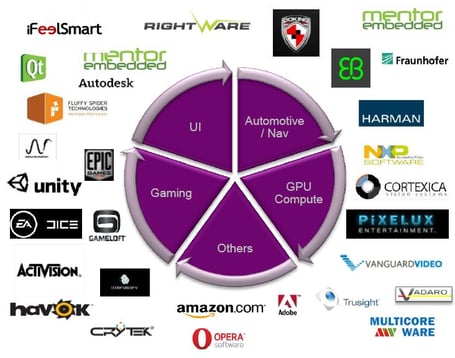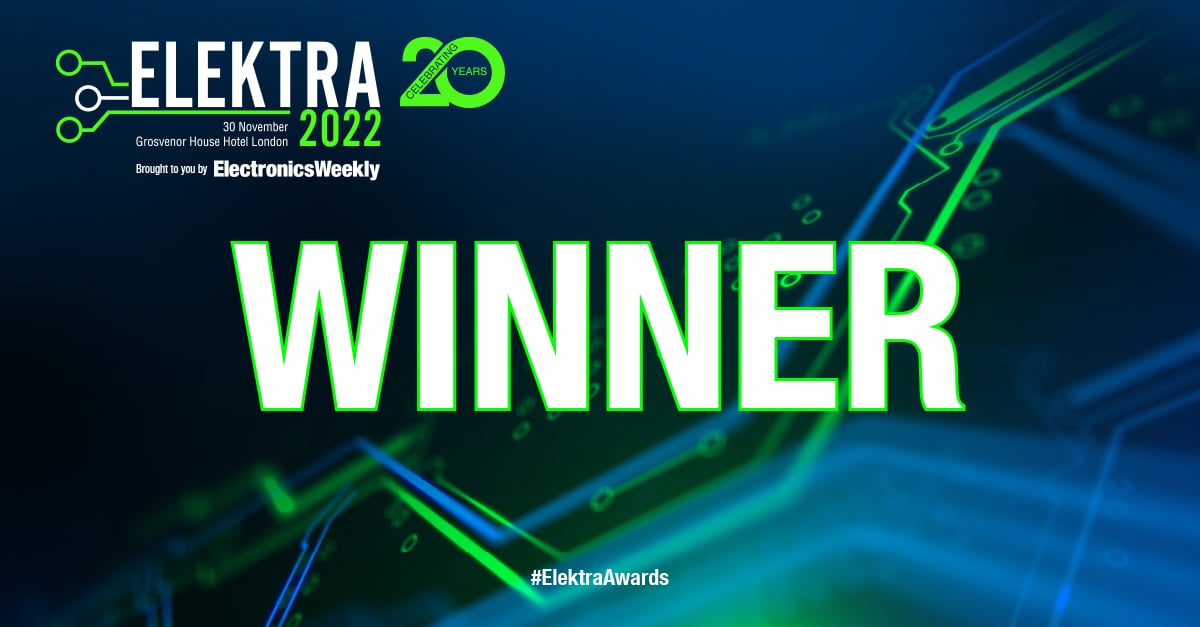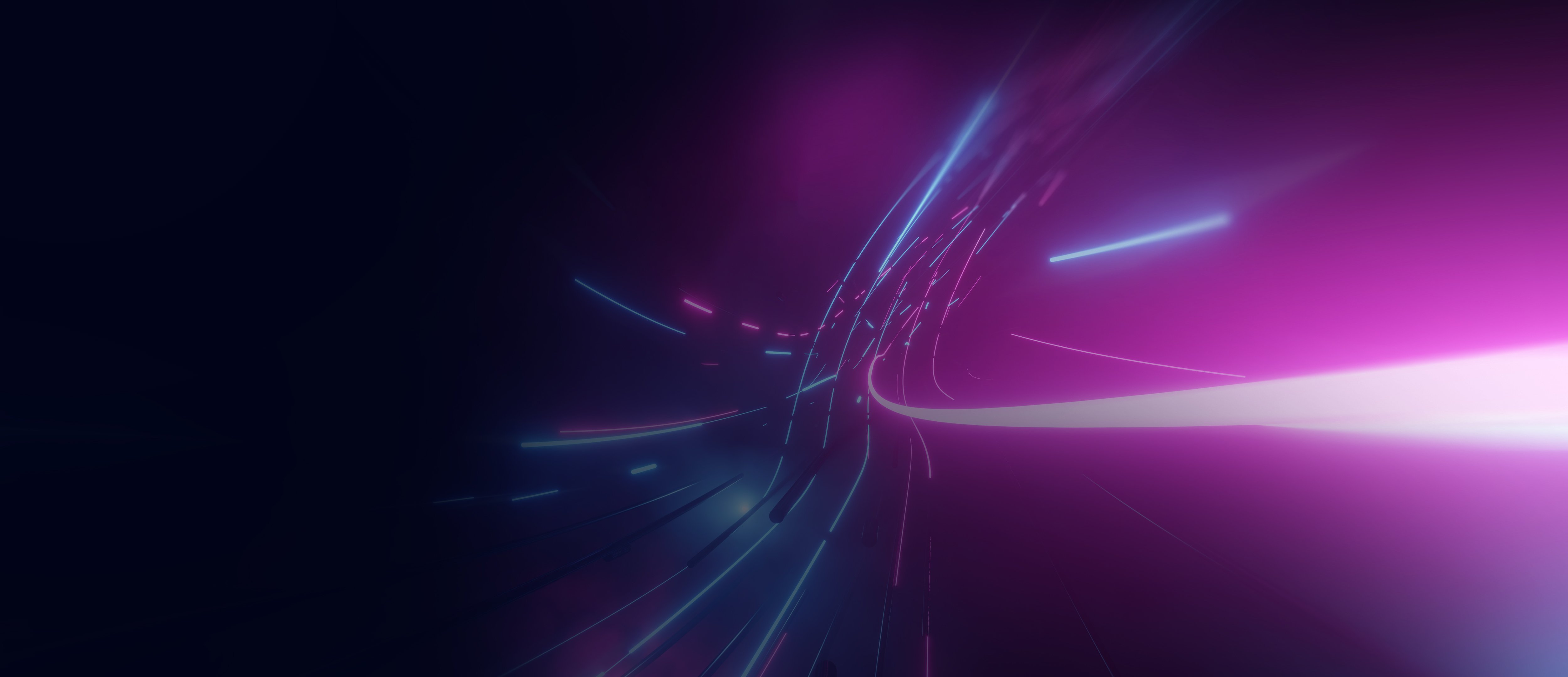- 06 January 2014
- Imagination Technologies
CES 2014 marks the expansion of the PowerVR Rogue architecture with a new family of GPU IP cores designed to enrich what is already the best roadmap for graphics the mobile and embedded industry has seen. The new PowerVR Series6XT Rogue architecture drives performance to new levels while reducing power consumption even further through advanced PowerGearing mechanisms.
During the event, we’re launching the first four members of our PowerVR Series6XT GPU IP family:
- PowerVR GX6250, GX6450 and GX6650 are fully-featured implementations with two, four and six shading clusters respectively.
- PowerVR GX6240 is an area-optimized two cluster implementation
The PowerVR Series6XT graphics IP family introduces even better levels of performance and the most comprehensive set of features designed to improve power management, reduce memory bandwidth requirements, offer superior image quality and accelerate time to market for our customers.
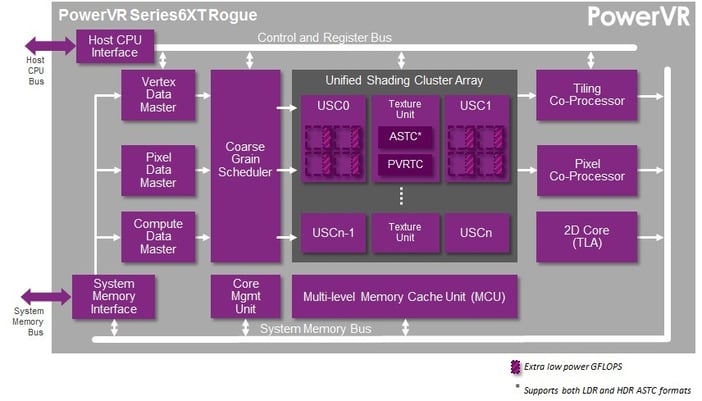 PowerVR Series6XT GPUs block diagram (OpenGL® ES* 3.0, DirectX 10, OpenCL™* 1.x)
PowerVR Series6XT GPUs block diagram (OpenGL® ES* 3.0, DirectX 10, OpenCL™* 1.x)
Dramatic performance improvements
Let’s talk performance efficiency first. When we first introduced the PowerVR Rogue architecture, our goal was to deliver a new benchmark for performance in mobile. Every PowerVR Rogue GPU core has been fully optimised for maximum efficiency which means we’ve always focused on keeping power consumption to a minimum. Consequently, PowerVR Rogue-based platforms have been at the top of graphics benchmarks from Kishonti, Futuremark or Rightware – and will continue to do so thanks to the new performance improvements brought upon by PowerVR Series6XT.
In fact, we can now offer you a sneak peak at the next-generation GFXBench 3.0 rendering on our GPUs. The scene below offers a preview of how developers can use the latest OpenGL ES 3.0 features to achieve console quality effects such as deferred and volumetric lighting, fuzzy particle systems, dynamic video textures and depth of field on mobile devices.
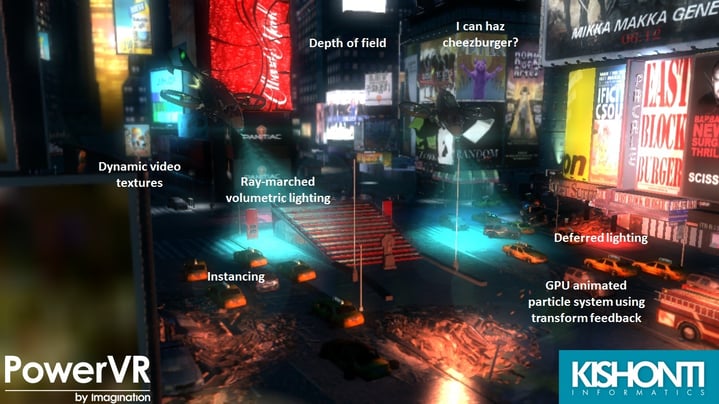 A screenshot of Kishonti’s GFXBench 3.0 rendered by a PowerVR Rogue GPU
A screenshot of Kishonti’s GFXBench 3.0 rendered by a PowerVR Rogue GPU
Thanks to numerous efficiency enhancements, our new PowerVR Series6XT GPU cores are up to 50% faster clock for clock, cluster for cluster compared to their Series6 counterparts; these performance measurements are based on frames from industry standard benchmarks.
And since PowerVR Series6 GPUs have already proven to be faster than any other mobile GPU on the market, PowerVR Series6XT is set to maintain and extend Imagination’s leadership when it comes to high performance, low power graphics cores. However, as performance keeps ramping up, it is important to remember that power and area are still the driving issues for mobile designs.
We’ve addressed both these issues by providing a comprehensive roadmap of GPU cores that have a set of carefully selected features which enable the best possible performance for each segment of the mobile market.
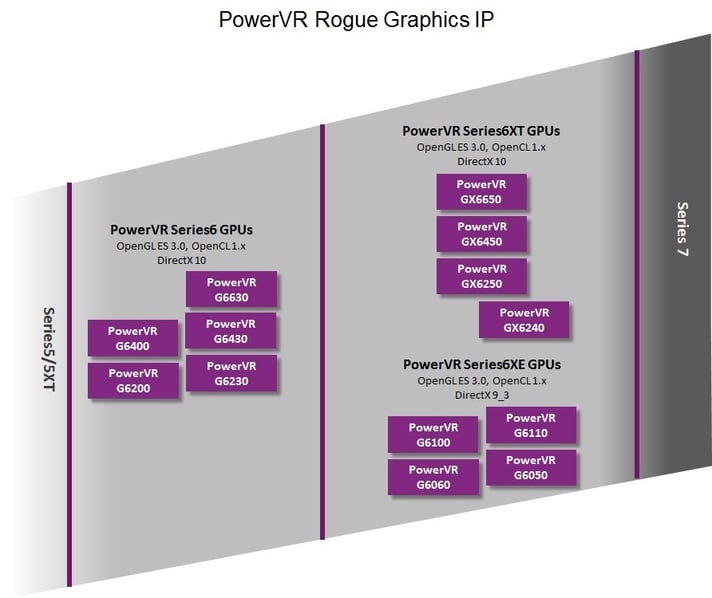 The current PowerVR Rogue graphics IP roadmap
The current PowerVR Rogue graphics IP roadmap
Power is particularly relevant for mid- and high-end devices; independent reviewers have seen countless examples of platforms throttling under graphics-intensive tasks. All PowerVR GPUs are designed to deliver sustained high performance while minimising heat dissipation thanks to a low power feature set that has been designed for real-world use cases. This feature set includes lower-power GFLOPS and PVR3C compression technologies.
Meanwhile, for silicon vendors that are targeting entry level platforms, area is becoming more and more relevant due to the costs associated with manufacturing larger SoCs. To address this, our partners can use our Design Optimization Kits (DOKs) to achieve an ideal balance of performance, power and area for their specific application. For example, the first DOK co-developed with Synopsys has reduced area up to 30% for PowerVR Series6 GPUs, while lowering dynamic power consumption significantly.
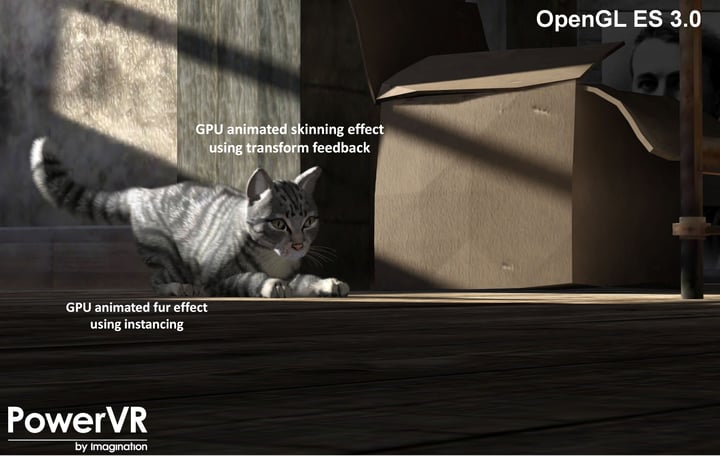 Soft Kitty – our latest OpenGL ES 3.0 demo rendering on a PowerVR Rogue GPU
Soft Kitty – our latest OpenGL ES 3.0 demo rendering on a PowerVR Rogue GPU
What’s new for PowerVR Series6XT GPUs
PowerVR Series6XT GPUs feature a number of performance improvements which have been achieved thanks to a combination of enhancements. We’ve added more low-power GFLOPS and made architectural tweaks that have boosted efficiency all-round; the list of enhancements includes:
- An improved instruction set for even better application performance and increased GPU efficiency
- A next-gen Hierarchical Scheduling Technology (HST) for further increased resource utilisation; this involves a combination of driver-based scheduling, optional multi-core scheduling (demand driven workload distribution across GPU cores), Microkernel firmware scheduling, coarse grain scheduling (programmable, per-cluster distribution) and cluster thread scheduling (data driven, massively multi-threaded and multi-tasking)
- Sustained polygon throughput and pixel fillrate improvements for more ever more responsive and fluid graphics
- GPU compute data path optimizations for higher parallel processing performance tuned with real world practical applications in mind
With the improvements listed above, Series6XT GPUs are able to offer amazing computing horsepower per mm2 and mW, making them the perfect choice for handling complex user-interfaces, ultra-realistic 3D gaming, image/video processing, augmented/virtual reality and many other demanding graphics and/or parallel compute applications.
And the list doesn’t stop here: we’ve added Deep Colour support for Ultra HD market segments. Silicon vendors can license our PowerVR Series6XT GPUs, PowerVR Series5 hardware video transcoders and the upcoming Series2 ‘Raptor’ camera/imaging IP and create a vision platform that maintains perfect colour fidelity from capture all the way to display.
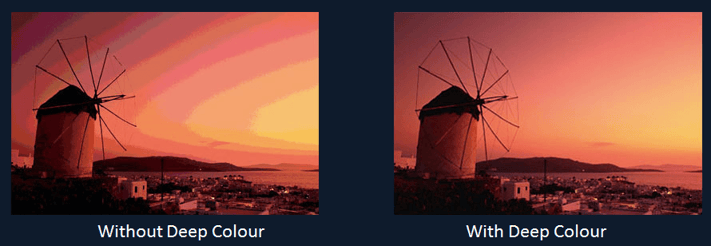 A comparison of image quality with and without Deep Colour
A comparison of image quality with and without Deep Colour
Moreover, the PowerGearing G6XT advanced power management technology provides the means for PowerVR Series6XT GPUs to offer more for less: more performance for lower power, when compared to previous generation cores. PowerGearing G6XT is a Series6XT-specific implementation of our advanced PowerGearing techniques and includes a combination of automatically enabling clock gating, enabling/disabling power to clusters, and intelligently using the Microkernel firmware to offer lower latency workload feedback into DVFS and power management decision process.
PVR3C triple compression for less bandwidth and lower power
PowerVR Series6, Series6XE and Series6XT GPU cores feature PVR3C, a technology encompassing three types of compression designed to lower bandwidth traffic and power consumption at the system level.
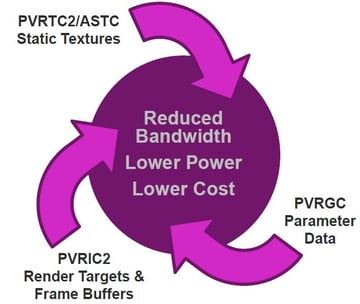 PVR3C includes a unique combination of lossy texture compression (PVRTC2/ASTC), lossless compression for dynamic resources and uncompressed texture resources (PVRIC2) and geometry compression for parameter memory (PVRGC)
PVR3C includes a unique combination of lossy texture compression (PVRTC2/ASTC), lossless compression for dynamic resources and uncompressed texture resources (PVRIC2) and geometry compression for parameter memory (PVRGC)
Firstly, PowerVR Series6XT supports lossy texture compression. This is designed to reduce static texture bandwidth and can go down to as low as less than one bit per pixel (1bpp). PowerVR Series6XT GPUs offer developers the possibility to use any of the existing texture formats below, creating the widest possible choice of industry texture formats:
- PVRTC/PVRTC2 (PowerVR Texture Compression), the industry’s most used low power texture compression format
- ASTC (Adaptive Scalable Texture Compression), a new optional extension for both OpenGL* 4.x and OpenGL ES 3.0 released and promoted by the Khronos Group
- ETC1 (Ericsson Texture Compression) and ETC2 (backwards compatible with ETC1 and mandatory in the OpenGL ES 3.0 graphics standard)
- DXTn, DXTC or BCn for DirectX9_3/10 capable cores
As the second and third parts of PVR3C, PowerVR Series6XT also delivers lossless image and geometry compression:
- PVRIC2 (2nd generation PowerVR Image Compression) aims at reducing framebuffer and render target bandwidth; PVRIC has a typical 2:1 compression rate with zero quality loss and integrates with display controllers.
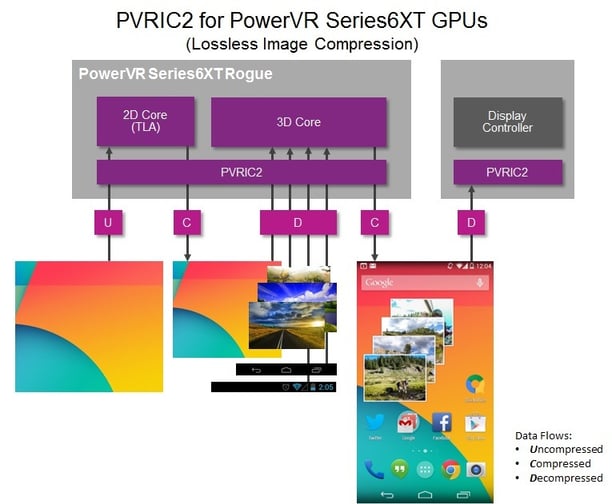 2nd generation lossless image compression (PVRIC2) for PowerVR Series6XT GPUs
2nd generation lossless image compression (PVRIC2) for PowerVR Series6XT GPUs
- PVRGC (PowerVR Geometry Compression) typically reduces parameter bandwidth by 30% with zero quality loss and comes in handy for applications with complex geometry (high polygon count)
Tools and ecosystem support
On top of the usual RTL deliverables, we’ve created flexible physical Design Optimization Kits to provide silicon vendors with reference design flows, reference layouts and documentation that enables them to tune for performance, power and area in an intuitive way that translates to a faster time to market with better resulting products.
Finally, PowerVR GPU cores continue to have the widest ecosystem support in the industry. We offer the best graphics SDK available for iOS, Android and Windows and provide training and support to developers big or small.
We also promote the widespread adoption of GPU compute in mobile by working with open source platform vendors and contribute to the development of OpenCL, Renderscript/Filterscript and other compute APIs.
For more news and announcements related to our PowerVR Rogue GPUs, please come back to our blog and follow us on Twitter (@ImaginationTech). If you are attending CES or MWC 2014, stop by Imagination’s booth to have a look at the latest demos and applications running on our customers’ PowerVR-based platforms.
Editor’s Note
* PowerVR Series6XT Rogue cores are based on published Khronos specifications, and are expected to pass the Khronos Conformance Testing Process. Previous generation PowerVR cores have already achieved conformance. Current conformance status can be found at www.khronos.org/conformance.
OpenCL and the OpenCL logo are trademarks of Apple Inc. used by permission by Khronos.
OpenGL is a registered trademark and the OpenGL ES logo is a trademark of Silicon Graphics Inc. used by permission by Khronos.



